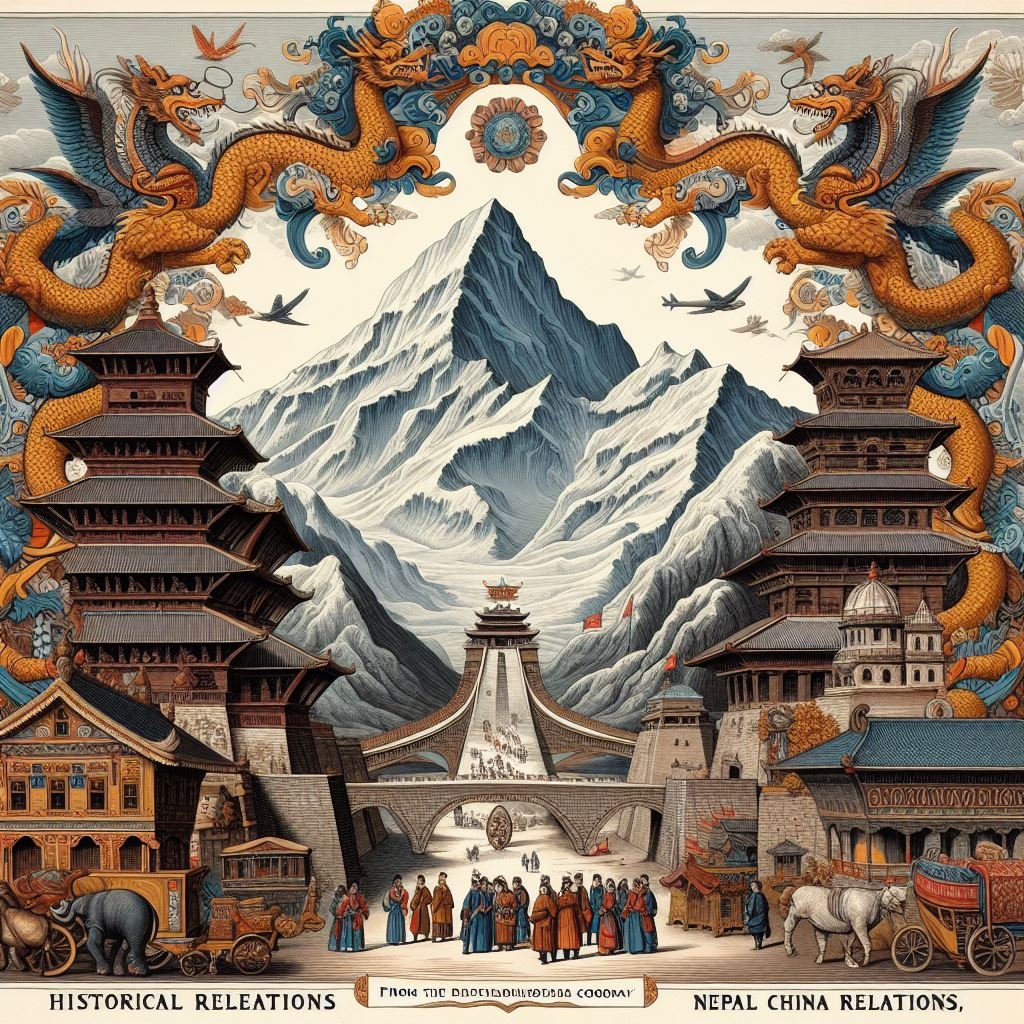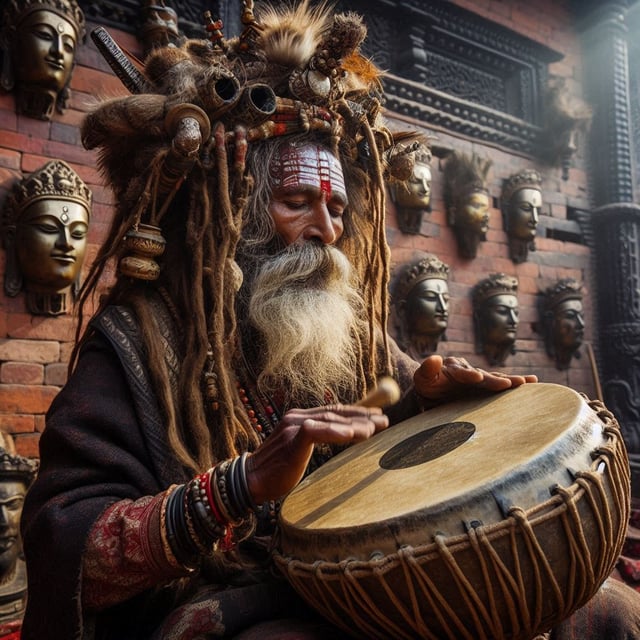Historical Relations from The Himalayan Corridor

The Himalayan corridor was formed when the Eurasian plate collided with the Indian plate 40 to 50 million years ago, giving rise to the magnificent Himalayas. As the water of the Tethys Sea shrank and evaporated, it created salt mines in the Tibetan plateau.
There was abundant salt in the Tibetan plateau, while the southern slopes of the Himalayas lacked salt. These conditions were appropriate for the salt trade from Tibet to South Asia utilizing the Himalayan corridors.
The earliest inhabitants in Mustang, one of the major corridors, date back 3,000 years. Further investigation revealed that they traded rice from South Asia for goods in Tibet. Unfortunately, this wasn’t an era when the region learned the art of writing, nor were there folk narratives that would shed light connecting the dots with archaeology. However, there are mythical stories that connect Kathmandu with China.
In a mythical era of Treta Yuga, Bodhisattva Manjushri came from Mahachin (China) and stayed on Mahamandap, a small hill one mile east of Bhaktapur, which was later called Manjusri Than. From there, he saw the Swayambhu light in the pond and drained it from the southern side. Manjushree then installed a king called Dharmakar and returned to China. These ideas were published by Daniel Wright in 1877 at a time when Nepal was nearly unheard of; while a new image of Sangri-La was being constructed based on chronicles.
While there is no exact evidence of the earliest Nepal-China trade relations, it should be remembered that the ethnic minorities in Nepal, accepted as the indigenous community, share a language family with the Chinese through the Sino-Tibetan language family.
Festivals such as Sonam Lhosar (Tamang New Year) coincide with the Chinese New Year; Yenya (Indrajatra) of Kathmandu coincides with the date of the Mid-Autumn Festival in China. Even the architectural style used to make temples is similar to that of China. These similarities indicate the probability of cultural exchanges, at least in the formation of these customs and structures.
The earliest historical evidence of Chinese travelers visiting South Asia is Faxian, who traveled between 399 and 414 CE. However, he undertook his journey from Central Asia to India in search of copies of Buddhist texts. Buddhism from South Asia had already reached China during the latter part of the Han dynasty (around 150 CE). While exact evidence is not prevalent, it is generally believed that the earliest form of Buddhism traveled by sea route.
The earliest Nepal and Tibetan relations reveal a more militaristic tendency, particularly in projecting Tibet as a very powerful state in history.
In 632, the Tibetan ruler Strong-tsen received the hand of Princess Bhrikuti. The text revealed that King Amshu Vermanticipated that 50,000 Tibetan soldiers would kill him and abduct Princess Bhrikui after destroying the valley and towns in Nepal. A clearer historical picture emerged in the year 695 when an edict was erected in Nepal, referring to Tibet as Bhot-Visti.
Historical facts reveal that trade and military actions have been occurring in the region since the 6th century. Around 647-48, Chinese emperor T’ai-tsung sent three delegates to his friend Harshavarshana, the king of India. However, by that time, Harshavardhan had died and his minister Arunasva (Arjuna) had usurped the throne.
Arjuna, being anti-Buddhist, robbed the Chinese envoy. The delegation team from Wang-shen-Tse escaped and took refuge in Nepal. They appealed to Tibet, and 2,000 Tibetan soldiers, leading 7,000 Nepali forces, defeated Arjuna in three days, capturing him alive and sending him to China.
The Himalayan corridor is not just a transit for goods; it is also a route for military endeavors. In 1962, the Sino-Indian War was generally agreed upon as a Chinese victory, exposing the vulnerabilities of India. These corridors have proven to be a significant threat to Indian security, and the reason for India’s enduring interest in Nepali internal politics.
The historical relations of the Himalayan corridor encompass both trade and war. The Ministry of External Affairs of India has prepared a documentary titled ‘Down the Ages: India and China’. Various war dramas by the Indian film industry continue to romanticize the wartime history between the countries. The Oscar-nominated movie ‘Caravan’ for best foreign-language film, reveals the potential of the Himalayan Caravan.
Author
Kripendra Amatya, Researcher, Nepa~laya Productions
Editor
Dana Moyal Kolevzon, Director of International Relations, Nepa~laya Productions
Published Date
January 1, 1970



